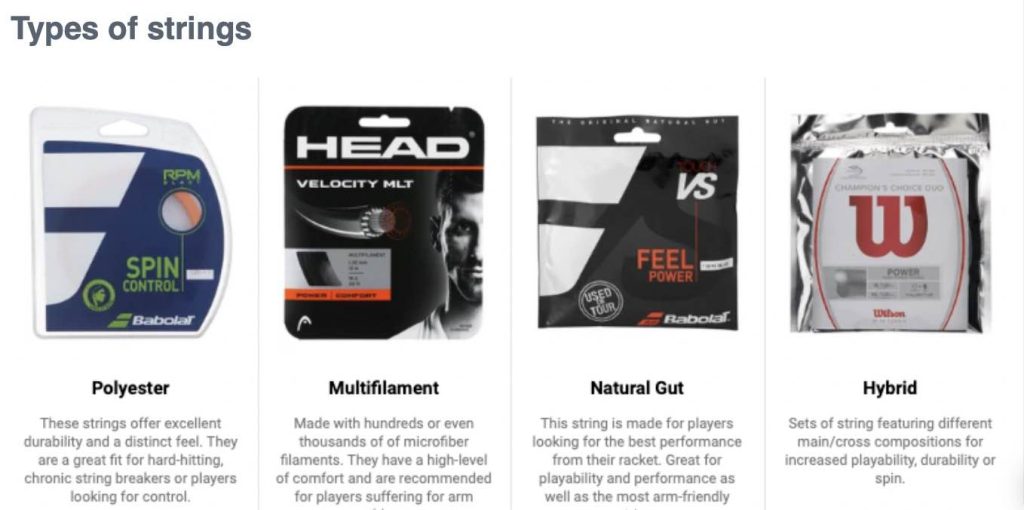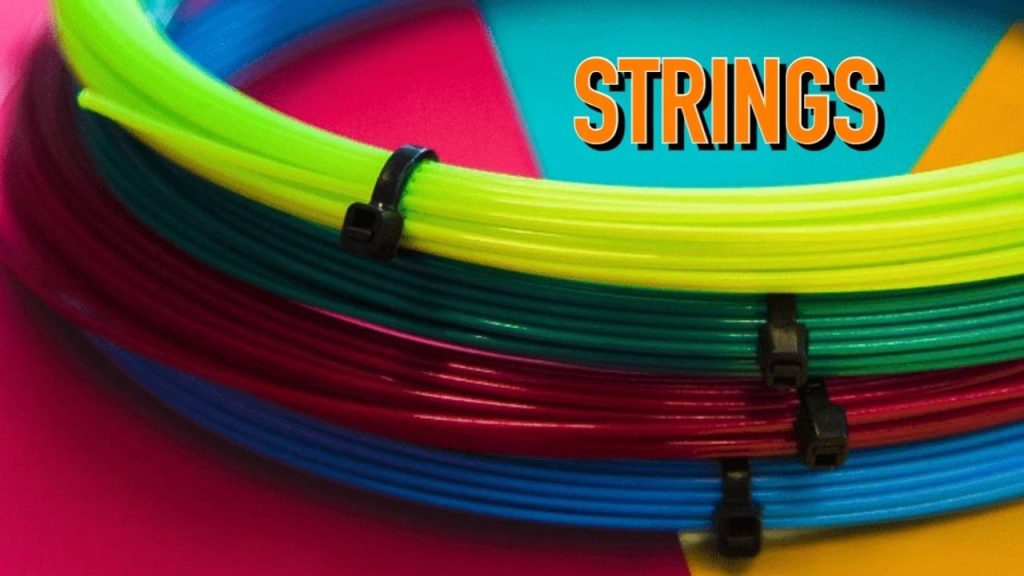How important are the tennis string compared to the racquet? Well, a bad string setup can ruin a great racquet and vice versa. Since the strings are actually what makes contact with the ball, I would say they’re equally important to how the racquet plays and feels.
You can check out our recommended strings here.
You can adjust the string bed through different types of strings (materials), different gauges (thicknesses) or different shapes (round, twisted, 4-sided, 8-sided etc.
But one key element is the string tension. This can be adjusted according to opponent, court, weather conditions etc.
Players who suffer from arm issues like tennis elbow often play with too high of a tension (55 lbs / 25 kg and above).
Types of tennis strings

There are mainly 4 different types of strings:
Polyester – used by most players today. Stiffer for more control and durability. Snaps back into place after a shot, so that players don’t need to move the strings back into place in between rallies like in the “old days”.
Multifilament – a string with a mix of materials to create a softer response and more power for the player. Not the best durability and spin potential, but pleasant on impact. If you don’t care about spin and focus on comfort, a multifilament string is the way to go.
Gut – made from cow intestines. This string is still around on tour after a hundred years or so. The reason being its excellent feel and tension maintenance. Good power and comfort, but not much in terms of spin potential. Many pros like to hybrid a polyester string with gut. For example: Djokovic, Federer and Murray.
Synthetic gut – A cheaper string with similar properties to gut. Power and comfort, but not as reliable when it comes to tension maintenance as natural gut.
Kevlar – An extremely stiff string which offers excellent control, but is too stiff for most players. Not used much today.

